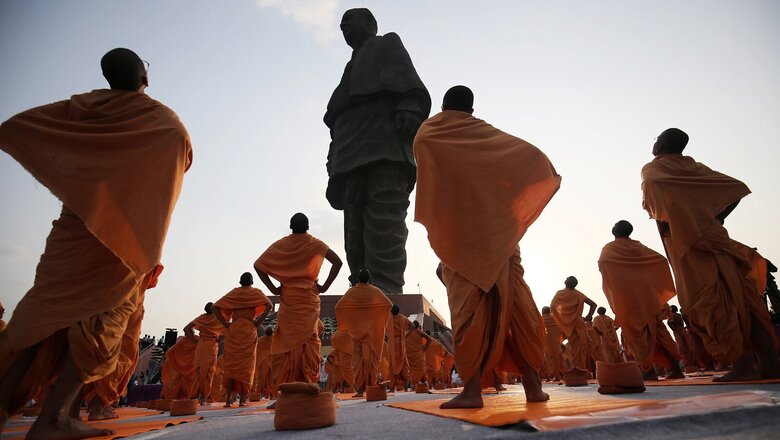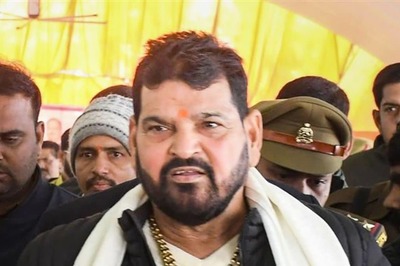
views
India is all set to assume the presidency of G20, a forum which represents key advanced and emerging economies of the world. During this annual presidency period from December 2022 to November 2023, India, for the first time, will be hosting the G20 leaders’ summit in New Delhi next September.
While the summit will expectedly witness intense deliberations around important issues at hand around the international economic and financial agenda, we must also utilise this opportunity to showcase our rich cultural heritage and traditions to G20 countries.
After all, India’s position at the global stage is not only influenced by its economic and military prowess but it is also about its “soft power” driven by its art, culture and spiritualism. It is only apt that the prominent theme of India’s G20 presidency is the “Soul of India”.
When we speak about the soul of India, an authentic Indian experience, one cannot miss the rich heritage which is more than 5,000-year-old civilization with its art, architecture, classical dance and music, traditions, philosophy, handiwork, cuisine etc. Our diverse and yet all-embracing confluence of customs and heritage, our rich ensemble of symbols of cultural diversity and civilizational heritage make India a captivating phenomenon and an alluring destination for travellers and tourists.
Our cultural heritage sites are not only a walk through history, but also a way of keeping our past alive for generations. What we are witnessing in India right now can be called its own phase of “cultural renaissance”. Several redevelopment initiatives and projects which hold civilisational importance have been undertaken.
Efforts of conserving historic and cultural resources in Indian cities and towns are now being carried out in a holistic manner while keeping the needs and aspirations of the local communities in mind. Our heritage sites and the development of cities is not about development and conservation of few monuments but reinvigoration of its soul and explicit manifestation of its character.
India’s cultural rejuvenation is visible through several initiatives such as the ongoing construction of the Ram Temple in Ayodhya, the Kashi Vishwanath Corridor in Varanasi connecting the Ganga and Kashi Vishwanath temple, the development of the Somnath temple complex, the renovation and expansion of the Mahakal temple in Ujjain, unveiling a 12-foot-high statue of Sri Shankaracharya, the redevelopment of the Kedarnath temple, the Char Dham Pariyojna, opening of the Sikh religious place Kartarpur Sahib Corridor, temple restoration in Kashmir, unveiling of the 216 feet tall statue of the 11th century bhakti saint Ramanajucharya in Hyderabad, Statue of Unity at Kevadia and many others.
These efforts have also transcended Indian boundaries with similar restoration efforts in countries like Bahrain, UAE and Nepal. We are bringing back the stolen idols from India and other ancient artefacts from around the world.
If the world were a stock exchange and India’s civilisational brand a listed stock, it can be said that in the last few years, its stock price has definitely soared. Yoga has been recognized by the UN and International Day of the Yoga is being celebrated the world over. Similarly, Ayurveda is gaining greater acceptance, particularly during Covid-19, when people realised the importance of wellness over health and the realisation gained ground that traditional practices and modern-day medicine science are not necessarily mutually exclusive.
Dolo met Indian kadha, a drink supposed to boost immunity, made in Indian kitchens. Amid all this, the growing interest among people across the world in Indian culture, dance, spirituality, art, history showcases the richness of our culture and civilization.
As part of this national cultural awakening, a New India is emerging which has deep respect for its longstanding civilization and connects a strong sense of identity with it. We are proud of all the cultural and historical places which are the seats of socio-cultural and civilizational centres and identities.
The nation is abandoning the old colonial mindset and creating new sources of pride while enhancing the old ones. Similar to this, locations connected to legendary figures like Netaji Subhas Chandra Bose and Shyamji Krishna Varma have gained magnificence. Additionally, Adivasi (tribal) museums are being constructed all over the country to highlight the illustrious past of our tribal community.
A new stream of thought is gaining ground in India that the pursuit of innovation and science and the rejuvenation and creation of civilisational assets are not mutually exclusive. India can march ahead in the World Bank’s Ease of Doing Business rankings, climb up in the Global Innovation Index and construct a Ram Temple at the same time. The question is not about conflict, but the challenge is to create and maintain synergy.
India’s ancient image as a “golden bird”, a land of spiritual knowledge, a land of spices, gold, diamond, ivories, enchanted merchants, explorers and navigators, is well known. In Mark Twain’s words: “India is a cradle of the human race, birthplace of human speech, mother of history, grandmother of legend, great grandmother of tradition”.
These words must echo in every foreign delegate during their visit to India during G20. They must witness this extraordinary and unbelievable cultural renaissance and detox themselves from the life’s deadlines and timelines. Let them have a lifetime experience of the timeless culture of India.
The author is a public policy professional and tweets at @_divyarathore. Views expressed are personal.
Read all the Latest Opinions here




















Comments
0 comment